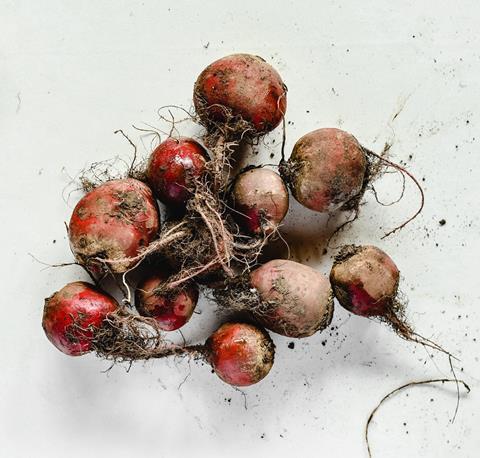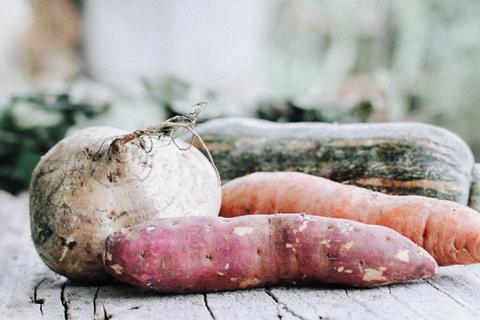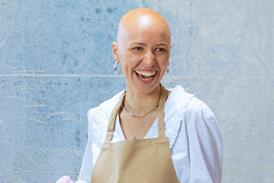Nutritionist Clare Backhouse explains how nature preserves the very ground we farm on

Here in the UK we’re beginning the season of autumn, which is a good time to consider what makes for healthy harvests. Loving our land through the way we farm, and the foods we buy, helps produce food that truly benefits our health.
In the August issue we saw how our ‘community’ of beneficial bacteria benefits our bodies. This month, we’ll see how another invisible community is crucial for the way we grow food.
An underground support network
Back in the late 19th century, the German botanist AB Frank noticed that some plants had a symbiotic relationship with underground, ‘mycorrhizal’ fungi. Over the next 100 years, scientists realised these fungal networks support almost all plant life.
Mycorrhizal fungi connect with plant roots, but, being very tiny and thread-like, they can travel more easily through soil than roots can. They spread across vast subterranean distances, taking up nutrients on the way.
Plants photosynthesise sunlight and water into carbohydrates, and share these carbohydrates with fungi through their roots in exchange for nutrients brought from the soil.
So plant roots essentially ‘plug in’ to a hidden web of fungi below our feet, which is constantly supplying them. Since the fungal network is so wide, it can draw benefit from distant plants and soil areas. A plant can also adjust the nutrients it receives by adjusting the carbohydrate it releases.
This continuous beneficial exchange doesn’t just feed the plant, however. It also supports the wider environment, because the plant’s carbohydrate contribution sequesters carbon into the soil. This also builds healthy soil, because the exchange process produces glomalin, a soil-binding protein.
The reason soil sticks to the roots of plants is not just because the plant happened to be in the soil, but because the plant interacted with mycorrhizal fungi.
Therefore, mycorrhizal fungi and plants together build and preserve the very land we farm on: an essential task for us and for the next generations.
Destructive farming
Sadly, most agriculture, which uses synthetic fertilisers and fungicides, militates directly against mycorrhizal fungi, and thereby directly against healthy soil…and therefore against our future harvests.
How? If a plant is sprayed with synthetic fertiliser, it no longer needs to reach out to the fungal network, because it relies on the spray instead. The diversity of nutrients it might have absorbed through the fungus is narrower. The plant acquires fewer nutrients, which means fewer for us to eat, too.
With less plant–fungi interaction, the soil becomes drier and crumbly, further restricting nutrients. Farmers are obliged to spray more and more fertiliser to overcome the fundamental ill-health of the soil.
As the plants become weaker, they become more vulnerable, requiring more and more pesticide and fungicide to keep up yield. These sprays further harm the mycorrhizal networks. Such farming is of course very damaging to the environment.
Without good mycorrhizal networks holding it together, soil more easily blows or washes away, creating erosion. Globally, this is very serious. There are many debates about how many harvests we have left before there’s literally nothing left to grow food on.
In addition to erosion, the toxic run-off from all the chemicals pollutes rivers and kills all sorts of insects (including pollinators) and fish.
On top of this, chemical sprays leave residue on food, which are both toxic in themselves and can also inhibit human absorption of nutrients. They can also weaken the beneficial bacteria of our gut.
The important alternative, therefore, is organic farming and food.

The organic alternative
You might think that organic food is way too expensive, especially with higher living costs. Or you may believe that: “It’s just not really my thing.” But humour me for a moment, and let’s consider organic farming in theory. It’s still worth understanding what all the fuss is about.
Organic food is essentially a way to show the land some love. It’s grown without chemical fertilisers, with radically reduced pesticides and no genetically modified crops.
This means that organic farming has to rely on the mycorrhizal networks to supply nutrients and create healthy plants. It also builds up soil health, prevents toxic run-off into waterways, encourages pollinating insects and sequesters carbon into the soil. Not to mention the benefits to farm workers, who have less exposure to harmful chemicals.
Finally, when you rely on the mycorrhizal fungi, you encourage the plants to draw up the exact nutrients they need, meaning they contain more nutrients for the eaters too. Organic food also means ingesting fewer chemicals and less gut microbiome disruption.
So even if organic produce is currently beyond budget, it’s worth knowing about if the opportunity ever arises. For example, you might spot it on special offer, or sold cheaply from a farmer.
Or you might buy just one item organically, such as strawberries, or apples (the Environmental Working Group has a ‘dirty dozen’ list of foods [those with the highest level of pesticides] you could prioritise buying organically: ewg.org/foodnews/dirty-dozen.php).
If you have a little space, you might be inspired to grow some of your own vegetables, herbs or fruit, or barter surplus from someone who does.
As always, caring for the health of ourselves and our world is never about strained obligation, but simply about showing love in whatever ways that we can.
For more information, contact Clare through her website:
transformationnutrition.org
































